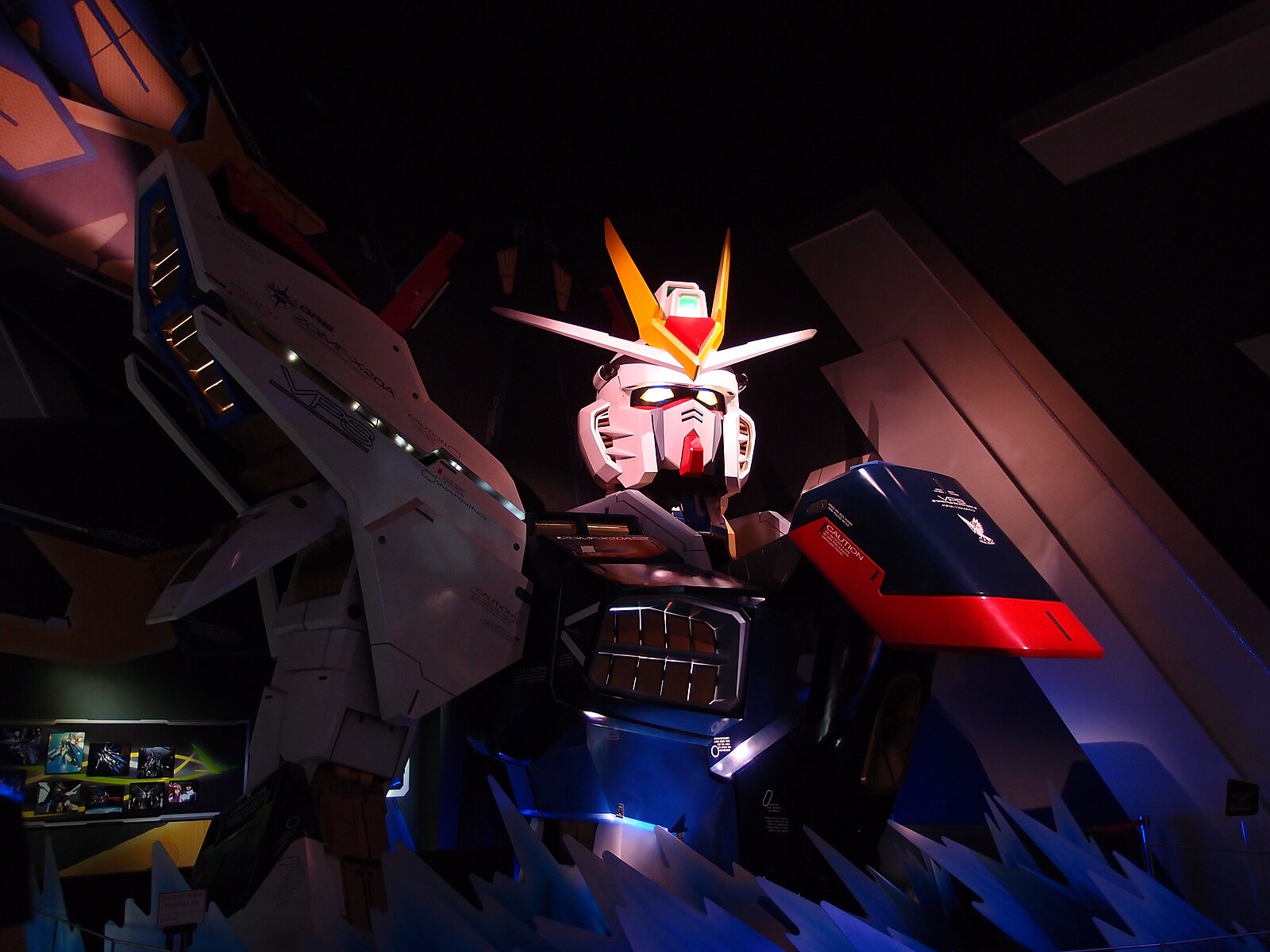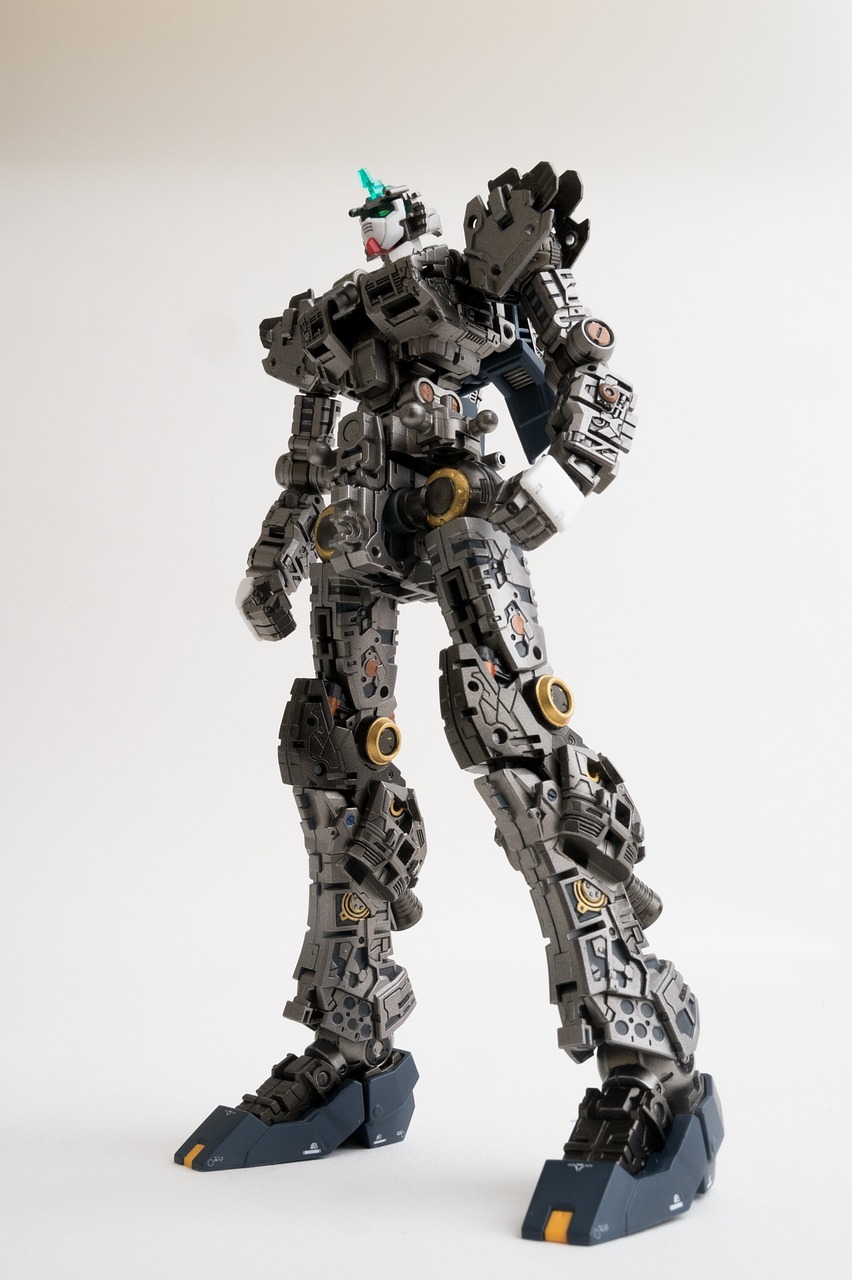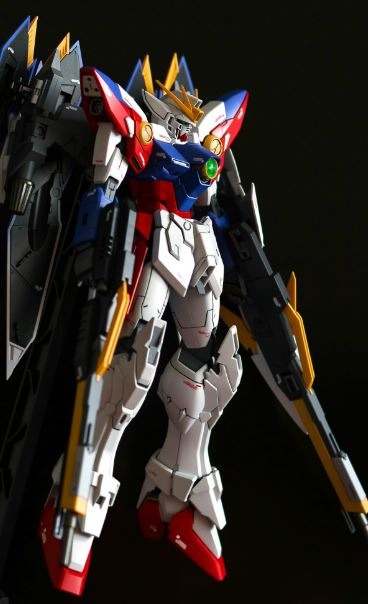The Impact of Gundam on the Toy Industry
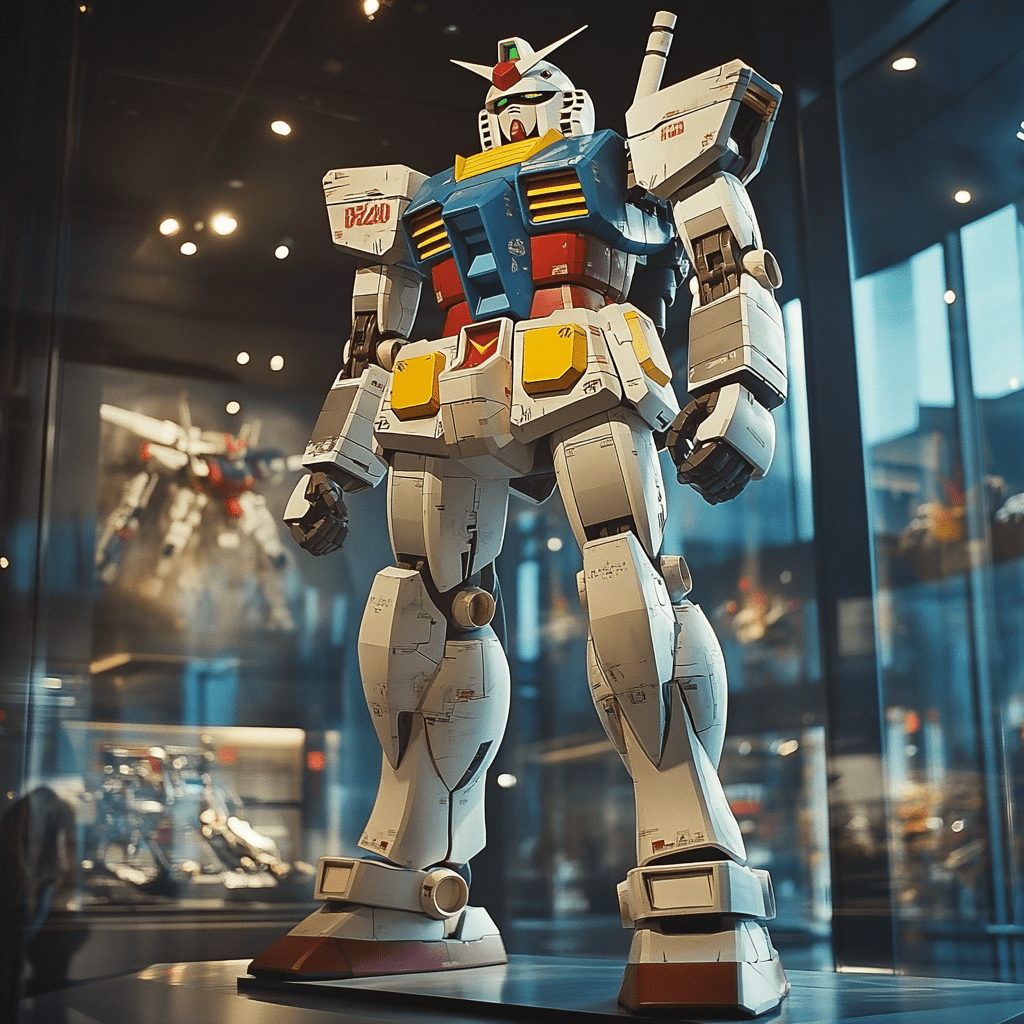
The anime series Mobile Suit Gundam, which first aired in Japan almost four decades ago, revolutionized the giant robot genre and has had a profound impact on the toy industry. This show not only captivated audiences with its compelling storyline and intricate robot designs but also transformed the market for model kits. Gundam's plastic model kits, known as Gunpla, have become a cornerstone of the toy industry, reaching impressive sales figures and maintaining popularity over time.
Gundam's influence extends beyond just toys and models. The franchise has inspired a wide range of merchandise including video games, clothing, and even postage stamps in Japan. The cultural impact of Gundam is evident as these toys and models are not just playthings but are often considered collectibles and are cherished by fans of all ages.
By reshaping the way robotic models are perceived and marketed, Gundam has set a new standard in the toy industry. The collaboration between toy companies like Bandai and the creators of Gundam showcases a successful synergy, resulting in continuous innovation and a lasting legacy in both animation and collectible toys.
The Genesis of Gundam and Its Innovations
The origin of Gundam began in Japan and brought numerous innovations to the world of animation and toys. Mobile Suit Gundam introduced the revolutionary concept of "mobile suits," changing perceptions of robots in anime.
Origins and Creators

Gundam was created by Yoshiyuki Tomino and produced by the animation studio Sunrise. The first series, Mobile Suit Gundam, aired in 1979. Initially, it struggled with ratings and was cut from 52 to 43 episodes. Despite this, it garnered a dedicated fanbase.
Tomino envisioned a realistic war story with complex characters and moral ambiguities. This was different from the more lighthearted or fantastical robot anime that existed before. The commitment to realism and depth set Gundam apart and cemented its place in anime history.
Innovations in Animation
Mobile Suit Gundam brought several key innovations to animation. Instead of depicting robots as invincible heroes, Gundam portrayed them as tools of war. This focus on realism extended to mechanical designs and the depiction of battles, emphasizing strategy and the human cost of conflict.
The series also pioneered the concept of serialized storytelling in anime. Each episode built upon the last, with long-term character development and intricate plotlines. This approach engaged viewers and kept them coming back for more, shaping future anime narratives.
Gundam and the Concept of the 'Mobile Suit'
The term "mobile suit" describes humanoid combat robots controlled by pilots. These machines are central to the Gundam universe. Unlike the giant robots in previous anime, mobile suits were depicted as realistic military hardware. The design, inspired by actual technology, aimed to make them believable as future innovations.
Gundams, a special class of mobile suits, stood out due to their advanced technology and pivotal role in the series. Their unique features and capabilities captured the imagination of fans and distinguished the series from other robot-themed media. This further influenced the design and marketing of toys and models, known as Gunpla, which became a significant part of the toy industry.
Evolution of Gundam Series
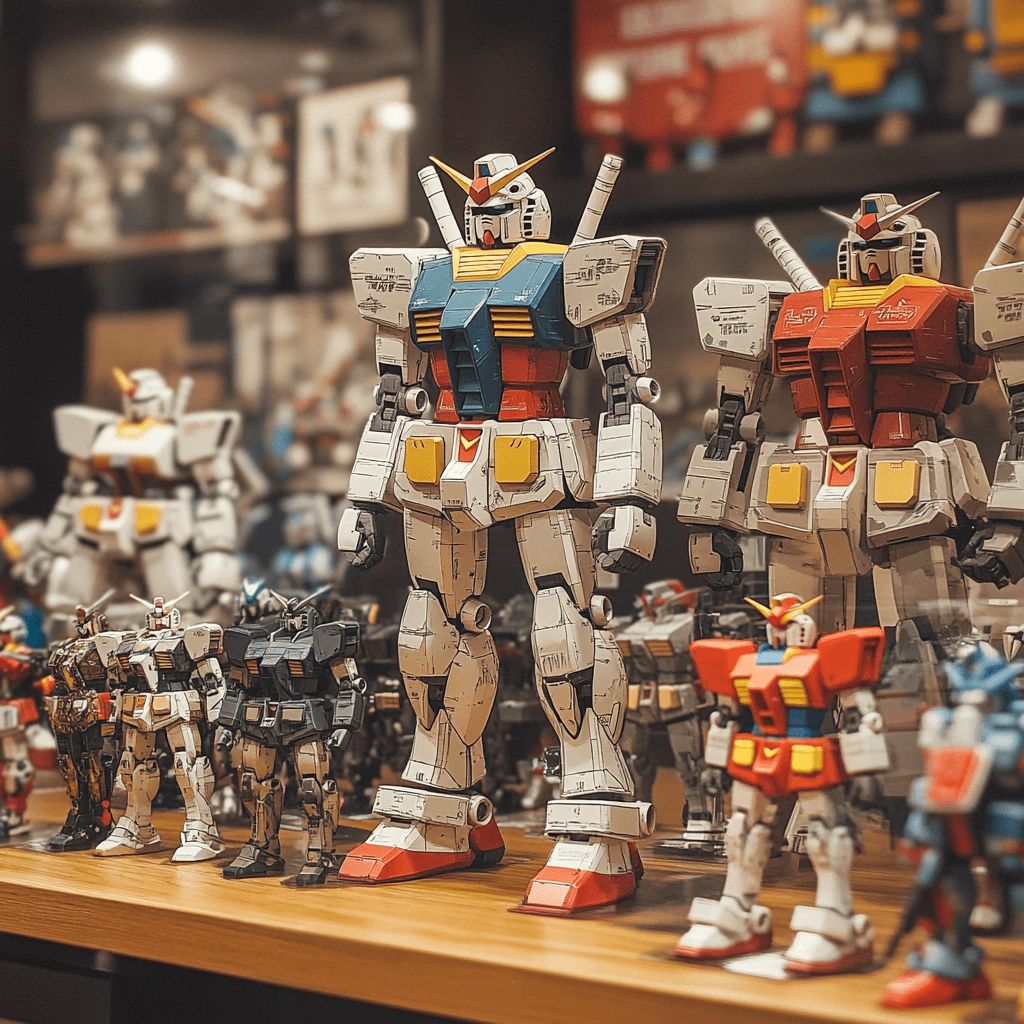
The Gundam series has grown significantly since its start in 1979, influencing many aspects of popular culture and advancing the mecha anime genre. It has expanded its universe, introduced new timelines, and ventured into various media forms.
Universal Century and Alternate Timelines
The Universal Century (UC) timeline is the foundational timeline of the Gundam series. It began with "Mobile Suit Gundam" in 1979, a story set in space colonies with themes of war and human survival.
As the series grew, other timelines appeared, offering different perspectives and storylines. Series like "Gundam Wing" and "Gundam SEED" are set in alternate timelines, providing fresh stories while retaining core themes. These new timelines allowed creators to explore different characters and conflicts without being bound to the original UC timeline.
Expansion into Manga and Novels
Gundam's success in television led to its expansion into manga and novels. This allowed deeper exploration of its vast universe and characters.
Popular manga adaptations, like "Mobile Suit Gundam: The Origin," retell the original story with additional details and character development. Novels such as "Mobile Suit Gundam Unicorn" provide intricate plots and character backstories, enriching the Gundam lore. These adaptations helped sustain interest in the franchise and brought in readers who might not watch anime.
Diversification of Gundam Media
Over the years, Gundam has branched out into various media. This includes video games, model kits, and even theme parks.
Gunpla (Gundam plastic models) became a phenomenon, allowing fans to build and customize their own mobile suits. Video games, like the "Gundam Versus" series, let fans experience battles firsthand. Additionally, special Gundam exhibits and life-sized statues have been installed in Japan, showcasing Gundam's lasting popularity.
Science Fiction and the Mecha Genre
Gundam significantly impacted the science fiction and mecha genres. Its realistic approach to robots, portraying them as complex machines, set it apart from other anime.
The stories often delve into serious themes such as the morality of war, political intrigue, and human resilience. This approach helped solidify Gundam's place in science fiction and influenced many other works within the mecha genre.
Cultural Impact and Popularity
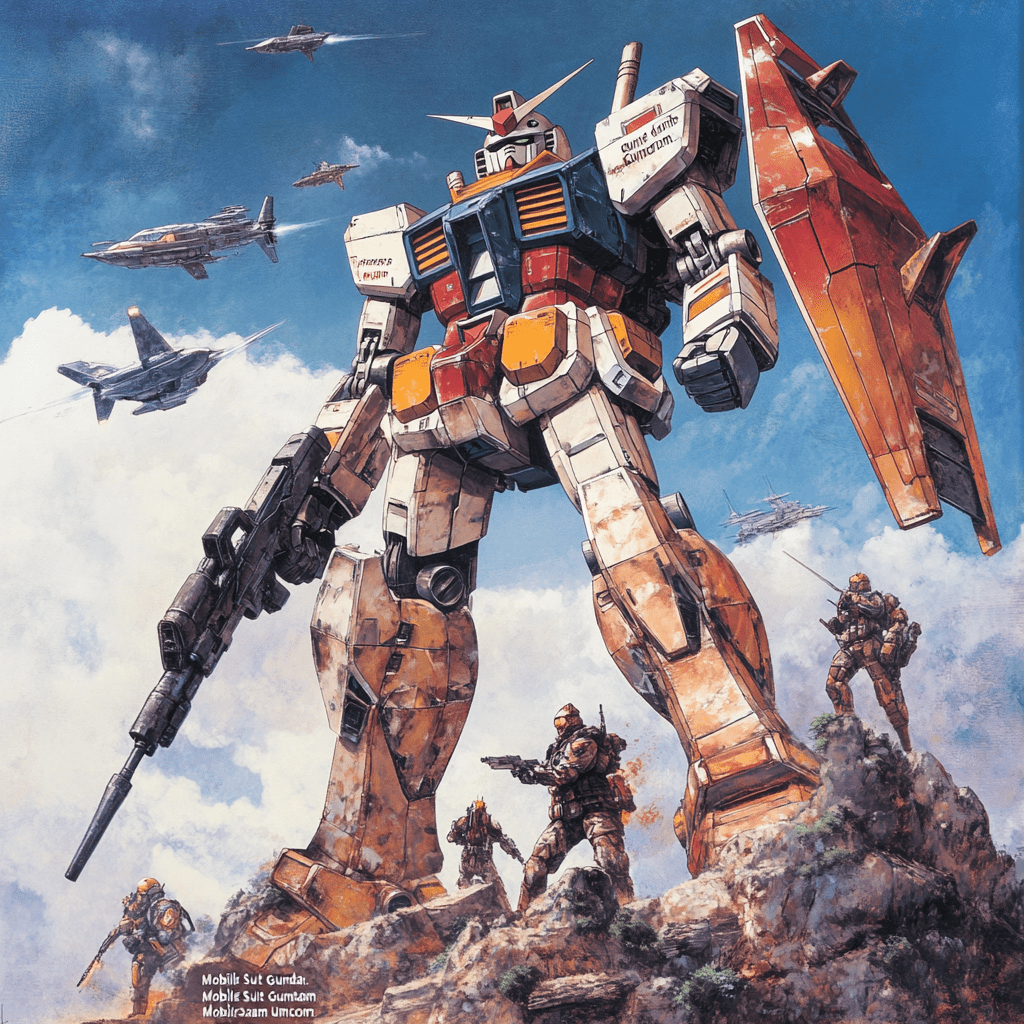
Gundam has had a significant influence on global pop culture and remains highly popular, with its enduring appeal rooted in various aspects. It has left its mark on public spaces and continues to be celebrated by fans worldwide.
Global Influence of Gundam
Gundam's influence extends far beyond Japan. It found success in the West during the mid-'90s, particularly with Mobile Suit Gundam Wing on Cartoon Network. This series introduced many to the Gundam universe, turning casual viewers into devoted fans.
In addition to television, Gundam's influence can be seen in the toy industry, where Gunpla (Gundam plastic models) have achieved global popularity. Over 650 million kits have been sold, showcasing its massive reach. Gundam's global footprint is a testament to its universal themes and complex characters.
Popularity in Pop Culture
In Japan, Gundam is more than just an anime—it is a cultural icon. Animage magazine named Amuro Ray, the protagonist of Mobile Suit Gundam, as one of the most beloved characters in anime history. The series has spawned over 30 television series, movies, and spin-offs.
Gundam's presence in pop culture is also marked by collaborations and merchandise ranging from postage stamps to advanced combat system codenames. These collaborations further cement its status as a pop culture phenomenon and illustrate how deeply Gundam has penetrated various aspects of Japanese life.
Enduring Popularity Explained
Gundam’s enduring popularity is due to its engaging storylines and relatable characters. The franchise explores complex themes like war, humanity, and survival, which resonate with audiences of all ages.
Moreover, its innovative mecha designs have captivated fans and influenced various media, including movies and video games. The Gunpla models keep fans engaged by allowing them to build and customize their own Mobile Suits, fostering a hands-on connection with the series.
Gundam in Public Spaces
Gundam's cultural significance is also evident in public spaces. The Gundam Statue in Odaiba, Tokyo, is a famous landmark. This life-sized statue attracts tourists and fans alike, reflecting Gundam’s immense popularity and cultural impact.
Additionally, Gundam Base Tokyo is a dedicated complex where fans can purchase Gunpla kits, view exhibitions, and participate in events. This venue serves as a hub for Gundam enthusiasts, further underscoring the franchise's significant presence in everyday life.
Gundam’s cultural impact and ongoing popularity are clear evidence of its profound and lasting influence around the world.
Bandai and Gundam Merchandising
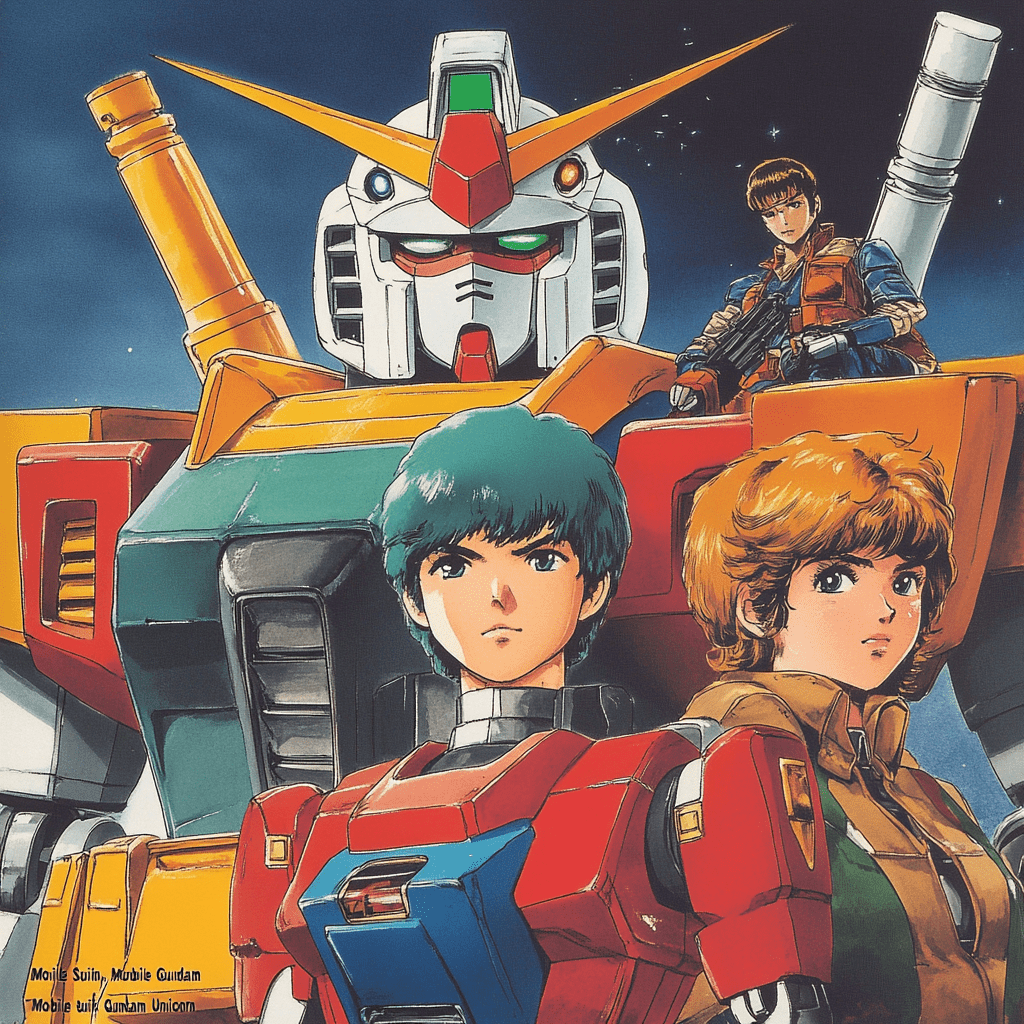
Bandai's strategic merchandising of Gundam has set a high bar in the toy industry. The Gundam model kits, known as Gunpla, are especially popular, reflecting advancements in both robotics and engineering.
Model Kits and Gunpla Revolution
Bandai's Gunpla kits have revolutionized the toy model industry. These kits allow fans to build their own Gundam models, promoting creativity and hands-on skills. Beginning in the early 1980s, Bandai has continuously improved their designs with more intricate details and assembly options.
Gunpla is available in various grades, from High Grade (HG) for beginners to Master Grade (MG) and Perfect Grade (PG) for advanced builders. These kits have fostered a community of enthusiasts who share tips, display their models, and even participate in Gunpla building contests.
Robotics and Engineering Marvels
The Gundam series has not only been a success in entertainment but has also inspired real-world engineering feats. Bandai’s focus on robotics has led to the creation of life-sized Gundam statues, such as the RX-78-2 Gundam in Tokyo.
These marvels of engineering highlight advancements in robotics and serve as tourist attractions. Beyond statues, Bandai collaborates with engineers to explore robotic movement and design, showcasing technology that brings Gundam closer to reality.
Collaborations and Licensing
Collaboration has been essential to Gundam's merchandising success. Bandai has partnered with various companies to produce a wide range of products. These include video games, action figures, and even apparel.
Licensing deals have seen Gundam characters and designs featured in diverse products, broadening the brand’s appeal. This strategy not only strengthens the Gundam brand but also introduces it to new audiences, ensuring its lasting impact on the toy industry.
Economic Influence on the Toy Industry
Gundam has had a significant impact on the toy industry, affecting sales, design, and even merchandise beyond toys.
Toy Sales and Market Share
Gundam has been a major player in the toy market, particularly in the model kits and plastic models segments. The series' realistic and detailed giant robot designs appeal to collectors and hobbyists. This has led to strong sales figures, contributing extensively to the $40 billion retail toy sales in the U.S. annually. Such sales have a ripple effect on the overall economic footprint of the industry, which stands at $102.8 billion.
Influence on Toy Design and Manufacturing
Gundam's success has influenced how toys, especially model kits, are designed and manufactured. The demand for high-quality, detailed plastic models has pushed manufacturers to adopt advanced technologies and materials. This influence can be seen in other brands and products, elevating the overall standard in the toy industry. The focus on accuracy and craftsmanship has even drawn attention from sectors like automotive giants such as Nissan and Toyota, which have collaborated on special edition models and merchandise.
Beyond Toys: Gundam's Broader Merchandise
Gundam's influence extends beyond traditional toys. The franchise has inspired a wider range of merchandise, from stamps to clothing and even themed amusement parks. This diversification helps bolster the economic impact of the Gundam brand, creating additional revenue streams. The merchandise appeals not only to younger audiences but also to older fans, widening the market and reinforcing Gundam's economic significance in the industry.
Gundam has undeniably shaped various facets of the toy industry, driving sales, influencing design attitudes, and expanding merchandise offerings. This broad influence underscores its status as a pivotal series in both toy manufacturing and economic terms.
Technology and Imagination Fused
Gundam, a popular robot anime, has significantly impacted both the toy industry and technological advancements. This section explores how Gundam influences aerospace, robotics, and creativity.
Impact on Aerospace and Robotics
Gundam's intricate designs, such as the RX-78-2 Gundam and Zeta Gundam, inspire real-world aerospace and robotics projects. Engineers and designers pull ideas from these models to envision new technologies.
Space colonies in the Gundam universe prompt scientists to think about human habitats beyond Earth. The structural design of these colonies helps guide research in creating sustainable living spaces in space.
Moreover, Gundam's depiction of robotics fuels innovations. The ambition to create a real-life Gundam spurs advancements in materials, mobility, and AI. The G GUNDAM series shows various robot designs, pushing boundaries of what's possible in robotic movements and uses.
Inspiring Imagination and Creativity
Gundam models and stories spark creativity among fans. Building Gundam kits requires patience, precision, and imagination. It transforms abstract ideas into tangible forms, allowing fans to engage deeply with their creations.
Children and adults alike are motivated by Gundam's elaborate narratives. They imagine themselves piloting these giant robots, exploring space, and participating in epic battles.
This imaginative play extends to creating fan fiction, art, and custom models. The combination of technology and imagination in Gundam offers endless possibilities for creative expression, bridging the gap between fiction and reality.
Conclusion
Gundam has had a lasting influence on the toy industry.
The Mobile Suit Gundam series, which began in 1979, sparked a revolution with its realistic robot designs. This shift helped the plastic model kit, or Gunpla, business take off, making it a major player in the toy market.
By the 1980s, Gundam's success led to a boom in mecha anime and related merchandise. Other shows like Zeta Gundam and ZZ Gundam continued this trend, further solidifying Gundam's role in the market.
Gundam remains popular today, with millions of model kits sold worldwide. Collectors and fans continue to support the brand, ensuring its place in both the toy industry and popular culture.
These model kits vary in complexity, appealing to both beginners and advanced builders. This variety has helped maintain Gundam's enduring popularity over the years.
Innovation has been key to Gundam's longevity. The creators have introduced new designs and technologies, keeping the line fresh and exciting. This forward-thinking approach helps Gundam stay relevant in a constantly changing market.
Today, Gundam is more than just toys. It's a cultural icon, influencing everything from video games to fashion. The toy industry's landscape has been shaped significantly by Gundam's success and will continue to be influenced for years to come.

